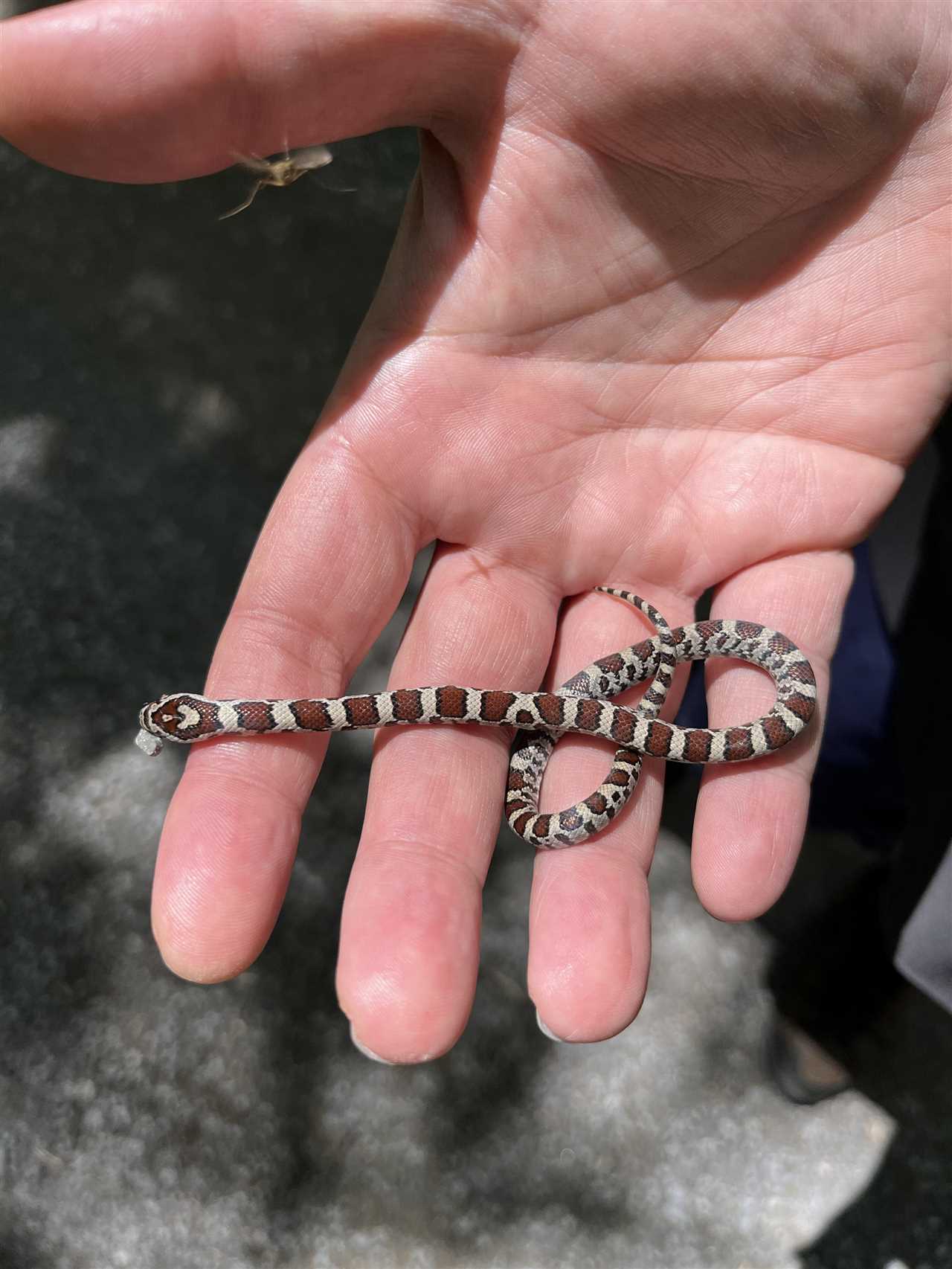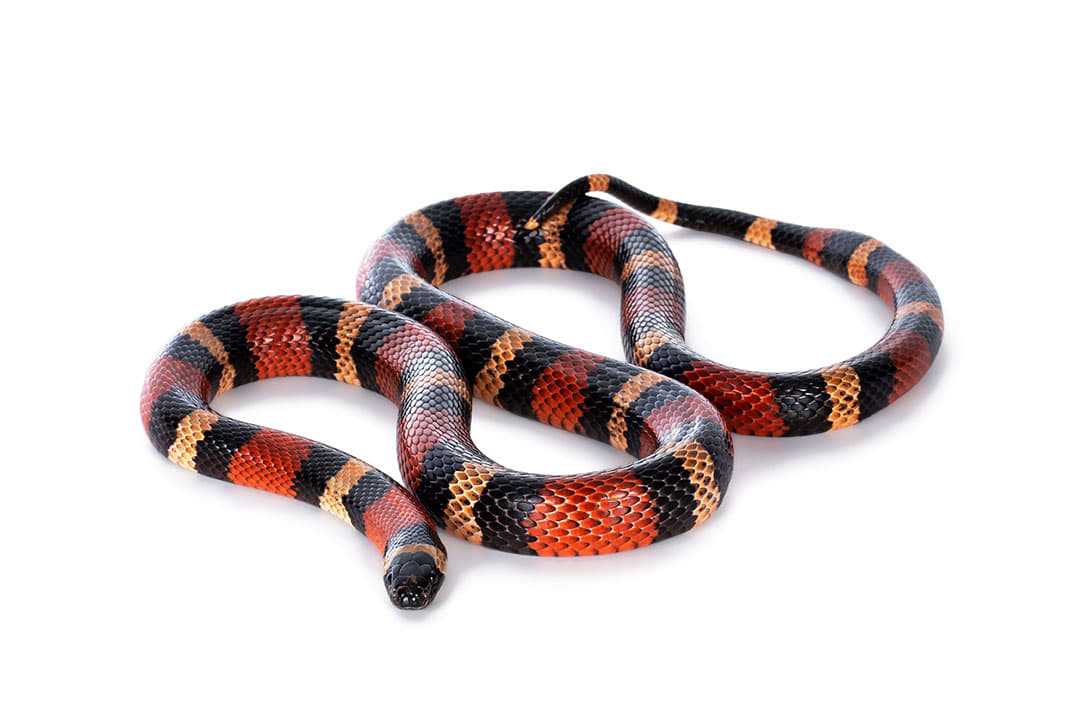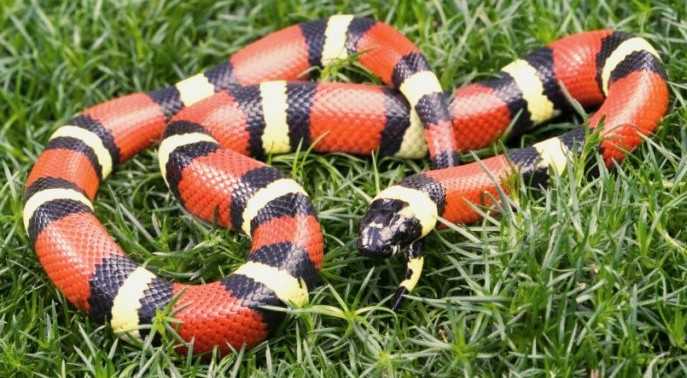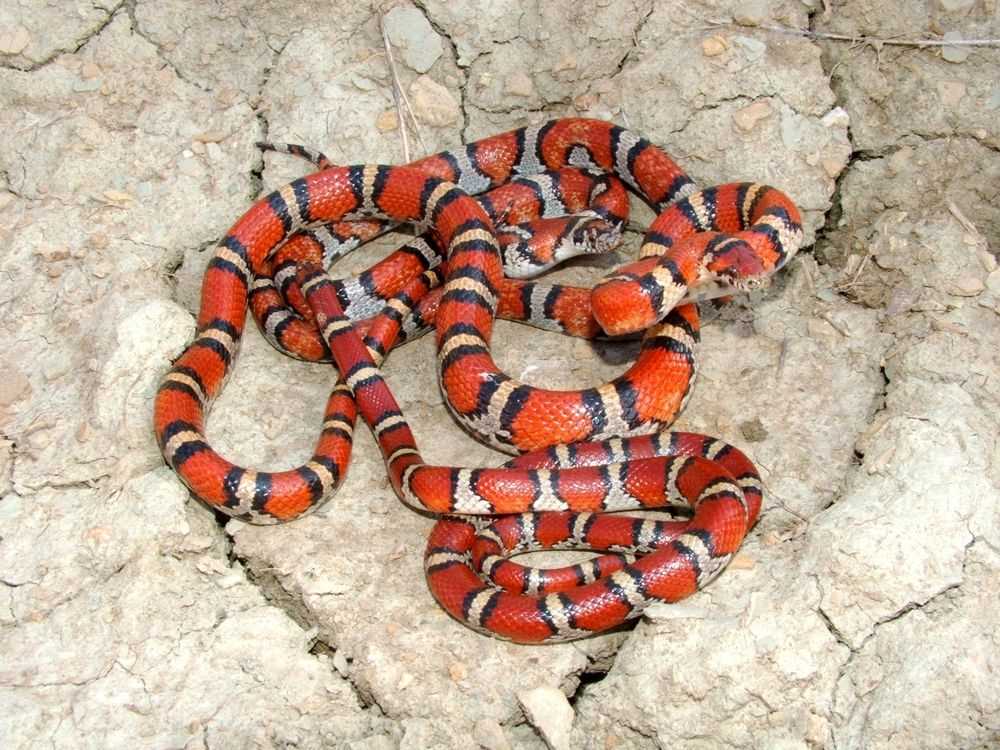
Due to their docile nature and relatively small size, Milk Snakes have become popular pets among reptile enthusiasts. Their ease of care, coupled with the fact that they are highly adaptable, makes them an ideal choice for both experienced reptile keepers and beginners. However, it is essential to provide them with the proper housing, a balanced diet, and a suitable environment that mimics their natural habitat to ensure their well-being and longevity.
Origin and Classification of Milk Snakes
There are several subspecies and variations of milk snakes, each with its own distinct coloration and pattern. The most common subspecies include the Eastern milk snake, Western milk snake, and Mexican milk snake. In addition to these, there are numerous morphs and hybrids that have been developed through selective breeding, resulting in an endless array of captivating color combinations.
Milk snakes are relatively small in size, typically reaching lengths between two to five feet. They have slender bodies and smooth scales, which contribute to their overall sleek appearance. One of the most fascinating characteristics of milk snakes is their ability to mimic the appearance of the venomous coral snake, with red, black, and yellow bands. This mimicry serves as a defense mechanism, deterring potential predators from attacking.
In summary, milk snakes are a captivating species of snake beloved by herpetology enthusiasts worldwide. Their smooth and colorful appearance, along with their non-venomous nature, make them a popular choice among reptile enthusiasts. With their diverse range of subspecies and morphs, milk snakes continue to fascinate and captivate reptile lovers around the world.
Physical Characteristics of Milk Snakes
One of the most notable physical characteristics of milk snakes is their smooth and slender body, which allows them to move quickly and easily through their environment. They have a length that typically ranges from 2 to 6 feet, with some individuals reaching up to 8 feet in length. Their body is covered in scales, giving them their characteristic shiny appearance.
Milk snakes are non-venomous constrictor snakes, meaning that they subdue their prey by wrapping their bodies around them and squeezing until the prey suffocates. They have powerful muscles that allow them to constrict their prey tightly. Despite their name, milk snakes do not consume milk or have any specific association with milk.
The coloration and patterns of milk snakes can vary greatly depending on their subspecies or locality. However, they generally have a combination of red, black, and yellow or white bands or patches on their bodies. This coloration is often referred to as “coral snake mimicry,” as it resembles the venomous coral snake, serving as a form of protection against predators.
Milk snakes have a long, forked tongue that they use to detect scent particles in the air. This allows them to locate their prey and navigate their surroundings. They have a keen sense of smell, which helps them locate potential mates and identify their offspring.
Scale Structure and Skin Shedding
Like all snakes, milk snakes have scales, which are modified epidermal structures that protect their bodies. These scales are made of keratin, the same material found in human hair and nails. The scales of a milk snake are typically smooth, but they can have some texture or ridges on their belly for improved traction and movement.
Shedding is a necessary process for milk snakes, as it allows them to remove any parasites, dirt, or other debris that may have accumulated on their skin. It also helps to replenish their skin’s moisture and maintain its elasticity.
Habitat and Natural Environment
The natural environment of a milk snake can vary depending on its geographical location. In colder regions, they may hibernate during the winter months, seeking shelter in rock crevices or underground burrows. In warmer climates, they may remain active year-round, taking advantage of the favorable conditions.
Milk snakes are opportunistic predators and feed on a variety of small prey, including rodents, birds, amphibians, and reptiles. They are constrictors, meaning they subdue their prey by coiling their bodies around them and suffocating them. After consuming their meal, milk snakes may go into a period of rest and digestion, often choosing a secluded spot to minimize distractions and potential disturbances.
Diet and Feeding Habits

Milk snakes are carnivorous and primarily feed on small mammals, such as mice and rats. In their natural environment, they also prey on birds, lizards, and other snakes. As constrictors, milk snakes do not have fangs or venom glands. Instead, they rely on their strong bodies to overpower and subdue their prey.
Prey for milk snakes should be appropriately sized, typically no larger than 1.5 times the snake’s diameter. Feeding live prey is generally not recommended, as it can pose a risk to the snake and may cause injuries. Instead, it is recommended to offer pre-killed or frozen-thawed prey items, which are readily available from pet stores.
Milk Snake Feeding Tips:

- Use appropriately sized prey items
- Offer pre-killed or frozen-thawed prey
- Feed juveniles every 5-7 days, and adults every 10-14 days
- Use feeding tongs or forceps to present the prey item
Proper feeding is crucial for the health and well-being of milk snakes. A balanced diet ensures they receive the necessary nutrients for growth and maintenance. It is essential to monitor the snake’s feeding response and body condition to ensure it is thriving. Consulting a reptile veterinarian or experienced herpetologist can provide valuable guidance and help maintain a healthy feeding routine for milk snakes.
Breeding and Reproduction of Milk Snakes
Mating Behavior

Like other snakes, milk snakes reproduce sexually. Breeding usually occurs during the spring and fall seasons when the temperature and environmental conditions are ideal. During this time, male milk snakes become more active and may engage in combat with other males to establish dominance and access to females.
The courtship ritual of milk snakes involves a series of intricate movements and behaviors. Males use their sense of smell to locate females through the detection of pheromones. Once a male finds a receptive female, he may engage in a dance-like behavior, where he vibrates his body and flicks his tongue in a mesmerizing display. This behavior helps to stimulate the female and initiates the mating process.
Egg Laying and Incubation
After successful mating, female milk snakes will lay a clutch of eggs rather than giving birth to live young. The number of eggs in a clutch can vary, with an average of 5 to 20 eggs. The female will typically find a suitable location, such as a burrow or a crevice, to deposit her eggs.
Once the eggs are laid, the female may leave them unattended. Milk snakes do not provide parental care, and the eggs are left to develop on their own. The incubation period can vary but typically lasts around 60 to 90 days, depending on the temperature and humidity levels.
Hatchling Care
When the eggs hatch, the young milk snakes emerge as fully formed replicas of their adult counterparts, only significantly smaller. The hatchlings are independent from the moment they break free from their shells and must begin searching for food immediately.
It is crucial to provide proper care and a suitable environment for the newborn milk snakes. The enclosure should be adequately set up with appropriate temperature gradients, hiding spots, and a shallow water dish for hydration. The hatchlings should be offered small-sized prey items, such as appropriately sized mice, to ensure proper growth and development.
Common Health Issues in Milk Snakes
Milk snakes are popular reptiles in the world of herpetology due to their unique characteristics and striking appearance. However, like any other snake, milk snakes are also prone to certain health issues that owners need to be aware of.
Another health concern for milk snakes is gastrointestinal problems. These snakes are constrictors, which means they subdue their prey by squeezing them tightly. However, sometimes they may accidentally ingest substrate along with their food, leading to issues such as intestinal blockage or impaction. It is crucial for owners to provide appropriate feeding materials and supervise feedings to prevent such problems. If a snake stops eating or shows signs of discomfort, a veterinarian should be consulted.
Lastly, milk snakes can also be susceptible to parasites, such as ticks or mites. Regular check-ups and preventive treatments can help in managing these issues. Owners should always be on the lookout for these external parasites and take necessary measures to eliminate them.
The Importance of Proper Care and Husbandry for Milk Snakes

Diet and feeding habits are also significant considerations when caring for milk snakes. These reptiles are constrictors, meaning they squeeze their prey to subdue and consume it. In captivity, they should be fed a diet consisting of appropriately sized rodents, such as mice or rats, depending on the snake’s size and age. Feeding should occur every 1-2 weeks, ensuring the meal is swallowed whole to avoid potential regurgitation.
Proper handling is essential when interacting with milk snakes. These serpents may become stressed or defensive if mishandled, which can lead to health issues or the snake biting. Always approach them gently and support their entire body when handling. It is also advisable to allow them time to acclimate to their new environment before attempting any handling sessions.
Regular veterinary check-ups are recommended for milk snakes to monitor their overall health and detect any potential issues early on. Common health issues in milk snakes include skin infections, respiratory infections, and parasites. Keeping their enclosure clean and maintaining optimal temperature and humidity levels can help prevent these health issues.
Popular Varieties and Morphs of Milk Snakes
In the world of herpetology, morphs refer to the different color variations and patterns that can be found within a species. Milk snakes exhibit a wide range of morphs, each with its own unique combination of colors and patterns. These morphs are the result of genetic mutations and selective breeding, leading to a stunning array of colors and patterns.
Some of the most popular milk snake morphs include:
- Tangerine: This morph features bright orange and yellow hues, giving the snake a vibrant and tropical appearance.
- Hypo: Hypo morphs display reduced melanin pigmentation, resulting in lighter colors and a more pastel-like appearance.
- Ghost: Ghost morphs have a light gray or silver base color with translucent scales, giving them a ghostly and ethereal look.
- Lavender: Lavender morphs have a light purple or lavender hue, creating a unique and eye-catching coloration.
Caring for Milk Snake Morphs

I’m Lena Adams—a product of an unconventional upbringing in the African wilderness. My father, a daring explorer of African wildlife, sparked my fascination with reptiles, a passion that intertwined with the tragic loss of my mother during an expedition, leaving an indelible mark on my life. Driven to understand the creatures that captivated my parents, I embarked on my journey, sharing insights about reptiles, frogs, and lizards on my website. Through my explorations and conservation efforts, I honour my family’s legacy while seeking connections—to the creatures, nature, and the mother whose presence I yearn to understand.
